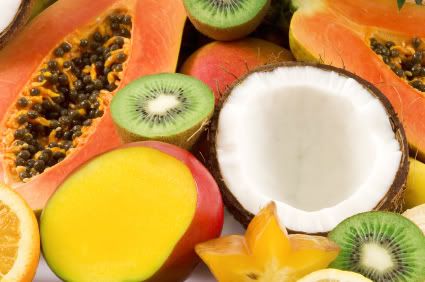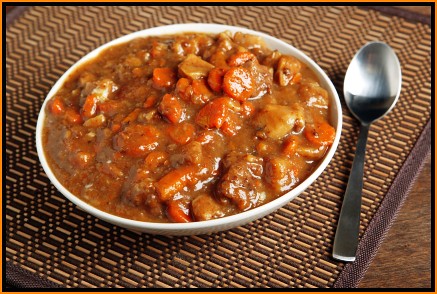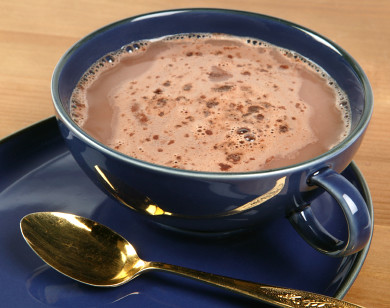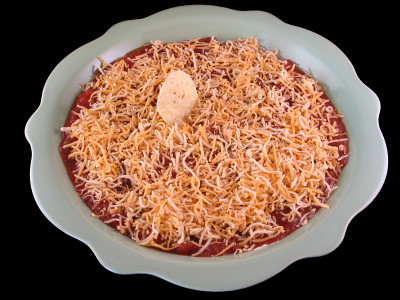 Think back in your life to a time when you were not in the most ideal situation for living healthy. That time could be RIGHT NOW for many of you, but for Jean Jitomir that was in her childhood when circumstances out of her control put her in a position that would later motivate her to do something meaningful not just in her own life, but in the lives of others.Today, I want to share Jean's story with you because hers is one of transformation and rising up to new challenges in the face of certain failure. None of the past really matters to her now because she knows she is light years away from where she used to be thanks to her own hard work ethic and undying spirit to excel at everything she does.
Think back in your life to a time when you were not in the most ideal situation for living healthy. That time could be RIGHT NOW for many of you, but for Jean Jitomir that was in her childhood when circumstances out of her control put her in a position that would later motivate her to do something meaningful not just in her own life, but in the lives of others.Today, I want to share Jean's story with you because hers is one of transformation and rising up to new challenges in the face of certain failure. None of the past really matters to her now because she knows she is light years away from where she used to be thanks to her own hard work ethic and undying spirit to excel at everything she does.As you can see from those before and after photos at the top of this post, Jean has changed her life and health through her diet and regular resistance training routine. Since I am new to weight lifting and in the midst of making this a regular part of my healthy lifestyle, I decided to interview Jean Jitomir from the "Built Nutrition" blog to learn more about how she incorporated bodybuilding into her life and to dispel some of the myths about women lifting weights. You won't agree with everything she says (especially regarding diet), but it's hard to ignore the final results. ENJOY!
1. I'm pleased to welcome to the "Livin' La Vida Low-Carb" blog today a woman who knows what she's talking about when it comes to getting into shape. Not only can she talk about it, but she LIVES it herself. I'm describing for you registered dietitian, exercise nutrition doctoral candidate, and national light weight bodybuilding competitor Jean Jitomir. As you can see from her pictures at the top of this blog post, she has sculpted and built her body into one bad mamma jamma! Welcome Jean! Lifting weights has traditionally been a "man" thing, but you have proven that stereotype is just not true. What got you interested in resistance training to begin with? Were you ever worried about "bulking up" too much and losing your femininity?
First of all, thanks a lot for the warm welcome and opportunity to do this interview! The very first experience I had with weight lifting was with my dad's 25-pound dumbbells as a 15 year old. I could do military presses, which is for shoulders. I had some really jacked shoulders, for a girl of 15 anyway. I lifted a little once I got into track in high school when the team converted my math teacher/coach's classroom to a weight room. The weights were concealed by upright gym mats during class time. When it was time for practice, the desks got pushed aside and we'd bench our little hearts out.The serious lifting and working out began in my sophomore year of college, however.I have never been concerned about losing my femininity because I simply don't take physique-enhancing drugs! Read my Times New Roman "you will not get big and freaky from lifting the heaviest weights you possibly can!" Rinse. Repeat.
Women who look unnaturally muscular are doing something illegal to get that way. There is absolutely nothing you can do to look like that otherwise, trust me, I have only gained about one pound of real muscle mass in a good year; its gets less every year (I'm pretty close to maxing out my genetic capabilities). I'm a woman who is trying to gain as much muscle as possible and I'm still 30 pounds lighter than I was as the overweight version of myself.Sometimes people think I look big and muscular in pictures, but are shocked to meet someone who is 5'2" and a size 0. Getting lean is a wonderful illusion that makes you look "bigger"; this applies to both men and women.
2. You came from a very modest upbringing where the household income for five people was just $20,000 annually. And yet I found it very interesting to hear your perspective on what those limited resources meant regarding your family's diet. The typical poor American household nowadays would use their financial status as an excuse for stocking up on cheap high-carb, sugary junk foods (what you like to call "craptacular" food) and yet that wasn't what you and your family feasted on. Instead, you ate what you describe as "a hearty chunk o' meat" with spring water. In essence, you were consuming a zero-carb diet for survival. What do you say to those people who use the excuse that their lack of money forces them to buy unhealthy foods? Share how people can avoid the high-carb crap and make better choices even with only modest means.
I think there is a distinction to be made between living off the land and home-raised livestock as a member of the rural-poor and the experience of living in America as an suburban or urban poor person. We also had carbs in our diet in the form of vegetables, milk, and rice, usually. It's just that the focus of most of our meals was certainly a chunk of organic, free-range, grass-fed beef—-an item that is quite pricey in any supermarket!That said, eating healthfully is possible on a budget; it just requires planning. For instance, there are a number of very inexpensive protein sources. For example, frozen non-breaded chicken tenders, eggs, beans (from dry or canned!), frozen edamame, tofu, ground turkey, milk, cottage cheese, and powdered whey or soy protein.
One of my favorite, under-known protein products is Fearn Soya Granules. These defatted bits of goodness all almost pure protein and fiber and ring in at about $2-3 for a large container! They are high in antioxidants and can be cooked like hot cereal or added to boost the protein content of a bean chili or, to some extent, a baked product. Soya granules can be found in many health food stores and online.
Another fun high-protein, high-fiber ingredient is partially de-fatted peanut flour. Many manufacturers add these to bars to get a super-peanuty flavor. You can buy this flour online and make low-fat peanut-flavored shakes that are off the charts!
Furthermore, many vegetables and fruits are cheap year round including bagged spinach, other dark green (mustard, collard, kale), broccoli, green peppers, carrots, zucchini, and apples. Furthermore, purchasing local foods in season at the farmer's market may help to cut costs. When all else fails, frozen vegetables are very high in nutrition (sometimes even better than fresh) because they are frozen at their peak ripeness and preserved. Frozen vegetables taste great and are usually substantially cheaper than fresh, not to mention convenient!
The best sources of grains are the uncracked, unprocessed kernels and there is really nothing cheaper! Some, like quinoa and bulgur, have moderate amounts of protein and cook within 15-20 minutes!
3. Just like you, I had to endure the pain of divorce as a child. It's a very confusing time in the life of a child because you feel like your entire world is collapsing all around you and it's YOUR fault. This stress can lead to some erratic behavior which can change an otherwise good kid into one who's looking for trouble. How were you able to overcome this inevitability and get back on the path you are traveling down today?
I think I had two good parents who were acting VERY stupidly and selfishly due to their own stress. Despite that, they were both showed love in their own ways; this is what ultimately saves anyone. Also, the influence of dedicated mentors and teachers cannot be overlooked! If it were not for my school nurse, who listened to endless hours of frustration, and my coach/teacher who made me work to meet his clear and reasonable expectations, I don't know where I would be today. The credit for my current and future success is owed, in part, to selfless individuals who supported me during the worst time of my life.
4. Tell us about your experience when you were subjected to a series of physical tests as a freshman in high school and you performed horribly. Was that what lit a fire within you perhaps for the first time to get your body into shape? What role did you mother play in motivating and inspiring you in this newfound journey to better health and fitness?
I think most of us can remember the dreaded timed-mile! In NY state, as in most other placed in the country, throughout elementary, middle, and high school students are required to perform yearly tests of the mile, pull-ups, and body fat. I performed terribly on these tests every year and was always embarrassed to cross the finish line last in the mile, not be able to do half a pull-up, and be told by my gym teacher that I was over-fat in front of everyone (those are the teachers I could have lived without! ;) As an overweight freshman in high school, my math teacher described how he would start a "cross-country" team, a sport where you would run 2 miles a day, minimum! I informed him that he was "crazy" to believe anyone would sign up for that.
During that year, I literally could not catch a couple of kids I was babysitting as they ran up the road and I knew I had to do something to be in better shape. I started "running," which consisted of about 50 feet of jogging to a "goal." Right before I reached that mini-goal, I would add another, until I really needed to take a walking break. The following Fall, I went out for cross-country and did the 5K (about 3.1 miles) in roughly 30 minutes on average; the next year I brought my time down to about 23-34 minutes. I was never a stellar runner, but I lost about 15-20 pounds and became fit and healthy!
5. Recalling my own undergraduate college experience at the University of Tennessee, it was extremely difficult to eat healthy in between two full-time jobs and a full load of classes each semester. The stress of all that as well as the added pressures that most people go through during that time in their lives caused my weight to suffer. You can certainly relate to this from your first year at Cornell University. You went through some trying circumstances that caused you to put on 30 pounds and fall into a deep pit of depression. What happened during that summer that followed to get your mind and body back in sync again? Why did you decide to ultimately change your major to nutrition and dietetics?
After a very bad second semester at college, I returned home to find myself unhappy and 30 pounds heavier—-I brought up the curve on the Freshman 15! I ran into one of my high school friends who got even more athletic in college; I started going to the gym with her—-it's so useful to have a partner in fitness! I also became a girl scout camp counselor, which involves a lot of chasing after 10 year olds. I lost about 20 pounds that summer and maintained that loss throughout college.
I started as a plant science major in undergrad, which didn't thrill me because, hey, plants don't do much. I had already taken a whole bunch of chemistry, biology, and math--I didn't want to start from scratch in a new major. I chose Nutritional Sciences initially because I thought it was interesting enough and I could graduate on time. The department required me to pursue dietetics because they wanted me to prove myself in the more rigorous track than general nutrition. I got high grades in dietetics and finished the degree on time.
My mother has always been a huge source of motivation and inspiration for me. She grew up fatherless, exceedingly poor, and dropped out of high school to give birth to my older sister. Two divorces later, she was on welfare with three kids. However, she went on to finish community college at the top of her program and was accepted to Cornell University to finish her bachelor's. After that, she attended Cornell Law School. She went from being a high school drop-out to an Ivy League lawyer in less than 10 years. She demonstrated that even if society looks down on you, anything is possible when you are sharp, motivated, and believe in yourself!
6. You never expected to actually compete in bodybuilding, but it sorta fell in your lap. You bought a book by Arnold Schwarzenegger to help you learn how to begin lifting weights and you grew to love it. How did you get past the initial soreness that I'm just now discovering happens when you begin a resistance training regimen? How long was it before you saw the results you were looking for? What was it like competing against other women in a bench press competition for the first time?
Soreness will recede as you become a more experienced lifter. That sensation goes away, for the most part, after several months! Also, soreness is not an indicator of "how good you hit your muscles"--research does not support this notion, though you probably will experience delayed onset muscle soreness (DOMS) within 24-48 hours after your workouts when starting a weight-lifting program. Slowly work through it, be consistent, and I promise it will get better!
I still haven't seen the results I'm looking for—-that's just how it goes. I just strive to be better all the time. If you become content with where you are, then you stop working hard. I don't want that. Though I will say, it took about 3-4 years of consistent lifting before I looked visibly more muscular than an average woman, so it's a long process to gain muscle mass naturally.
Furthermore, most women simply don't have the genetics to gain a whole lot of muscle mass—-I am certainly born with a decent amount of potential, which I have realized through consistent, hard work! That said, resistance and cardiovascular training are both important to fitness and anyone will improve and be closer to his or her potential through the same efforts; the end result will be different for different individuals, however. I was so scared to do my first bench-press competition! My heart was racing and I was afraid to weigh-in and nervous about missing my lifts. I still was able to win that small contest and many other, though I'm still nervous every time!
7. Obviously, your early success in those competitions gave you confidence to try even more of them in the future. In September 2005, you competed in your first bodybuilding competition--AND WON! You won your class and the overall title to go to the national competition. CONGRATULATIONS! Although you were not as muscular and big as the other women at that level, tell us why you were less concerned about winning and more interested in how far you've come from your humble upbringing.
It's so hard, especially in physique competition, to keep your progress in perspective. When you are being compared to other equally motivated, talented, or possibly chemically-enhanced individuals, priorities often become blurred. That's why there needs to be a motivator that is larger than the contest at hand. For me, I am rewarded by an e-mail by someone who was benefited by information on
my blog or motivated by my story.
I am also flattered by the great health and nutrition questions I receive from inquiring minds. I currently have a Certified Strength and Conditioning Specialist and practicing Medical Doctor who are good enough to guest-blog on my site, so even if your training or health question is out of my scope of practice, I may be able to find a good answer and get it posted!
8. Today, you are at Baylor University studying to receive a PhD in Exercise, Nutrition, and Preventive Health. As a registered dietitian, you are able to tweak your menus to coincide with your next bodybuilding competition. I'm curious, have you discovered anything extraordinary about what kind of diet maximizes your ability to compete on the highest levels? Do you believe in the theory subscribed to by so many in the fitness industry that you need to "carb up" to fuel your workouts? Why or why not?
Athletes need carbs. Period! Carbs are the primary source to fuel any intense workout and you will injure yourself if you train or compete at a high level and do not take in adequate amounts! I have seen and met with several triathletes in particular who have made the mistake of taking their carbs too low and suffer from poor performance and over-training.Many sedentary or carb-sensitive individuals, however, will benefit from a diet that is a low to moderate in overall carbohydrate. If your daily activity is low, you do not need a lot of carbs to fuel your expenditure.
Furthermore, numerous studies conducted in my own lab at Baylor and by
Dr. Donald Layman et al (early 2000s) provide strong evidence that a weight loss diets that is fairly high in protein, low-moderate in carbs, and moderate in fat is beneficial for weight loss and retaining muscle mass during a period of energy restriction, especially in overweight women ages 35-60 or so.If you workout intensely, carbs after your workout are a must; the insulin response is a signal for muscle-building after a workout and is also essential for recovery. Please refer to my blog for specific posts on this topic!
9. If the United States continues down our current path, then obesity and related diseases will eventually become the norm (if it isn't already) and the concept of health will be lost forever. With such ridiculous statements as "fat is bad" and "sugar is healthy," there's little wonder why Americans are so confused and baffled about what they need to do to eat better. What do you think can be done to get people more interested in living a healthy lifestyle both through diet and exercise?
I think that food processing is a huge industry with a lot of advertising money and political control. Our previous recommendations have not been influenced by optimal health outcomes and the result is manifest in reduced quality of life and increased healthcare costs.
The motivation issue is paramount. It's an important area of research and thought—-what will inspire the American people to pass up the bargain buffet and opt for smaller portions of whole food and regular exercise? If I knew the answer to that, I could just post in on my blog and retire!Generally speaking, Walter Willett (Harvard) is a good nutrition expert to look to for advice in term of healthy living and eating.
Based on the research of Willett and colleagues, the principal advice is moderate portions of whole food equals good; processed food, especially in large portions is bad.
Whole: Vegetables (not in a can!), nuts (controlled portions!), fish, fruits (not sweetened in a can!), beans/lentils, lean meat and fish (less than 5 grams fat per 3oz serving, exception is fatty fish), whole grains: brown rice, old-fashioned oats, quinoa; lean dairy in moderation
Processed: everything else, especially 1) grains that have been smashed, kneaded, heated, chop-up, and wrapped in air-tight plastic; 2) high-fat meats that have been treated with God-only knows what and are not hospitable to microorganisms of any kind; and 3) most "foods" that come in cans, wrappers, and boxes. These are foods that really were never intended to go in the human body!
10. Jean, thank you so much for being here with us today at my blog. You are an important voice in the health debate and I am encouraged to know there are people like you out there espousing common sense and proven experience in regards to fitness and health. And you look absolutely fantastic! What an inspiration to all of us who hope to follow in your footsteps getting our bodies in the best shape of our lives. Is there anything else you'd like to share with that person who thinks lifting weights and eating a healthy diet is useless?
I know it's very hard to start and stick with it. In my own young life, I have already started twice! Almost everyone feels unsure about exercising or going into the gym for the first time; it's normal. But it's also very important to find what helps you work past those feelings and be consistent about exercising regularly and eating a diet that will help you maintain a healthy weight and reach your goals.
My mom is a good example. For years, she tried to lose weight for cosmetic reasons. Even considering all she had accomplished, she could not get her weight under control using vanity as her source of inspiration. Then about two years ago, she was diagnosed with serious hypertension and Type 2 Diabetes; she was told she would die early if she did not lose a certain amount of weight. A serious health risk motivated her to lose 40 pounds and improve her health.
Hopefully, the wake-up call doesn't have to be that severe for the majority people who have not already made a commitment to living a healthy lifestyle. Find a way to stick with a regular exercise plan and a diet consisting mostly of natural, whole foods; the rewards will be evident within a month or two and serve as an internal source of inspiration!
 In the 1990s dietary fat was considered the epitome of diet destruction, but now we understand that fat is important for normal body function and growth. In fact, humans need the certain essential fats to live!
In the 1990s dietary fat was considered the epitome of diet destruction, but now we understand that fat is important for normal body function and growth. In fact, humans need the certain essential fats to live!



 String cheese is good out of the fridge for at least 3-5 hours, since it is sealed. Also, many convenience stores have the standard version available. By the way, if you are lactose intolerant, cheese is not an issue; there are no carbs in cheese, and hence, no lactose!
String cheese is good out of the fridge for at least 3-5 hours, since it is sealed. Also, many convenience stores have the standard version available. By the way, if you are lactose intolerant, cheese is not an issue; there are no carbs in cheese, and hence, no lactose!











 Roasted Asparagus and Fennel
Roasted Asparagus and Fennel 







